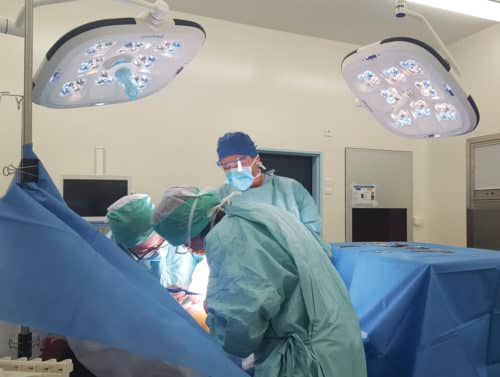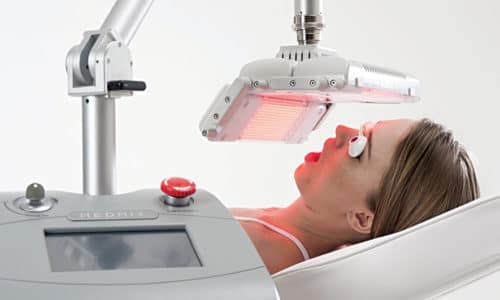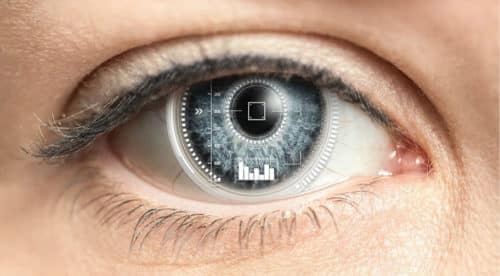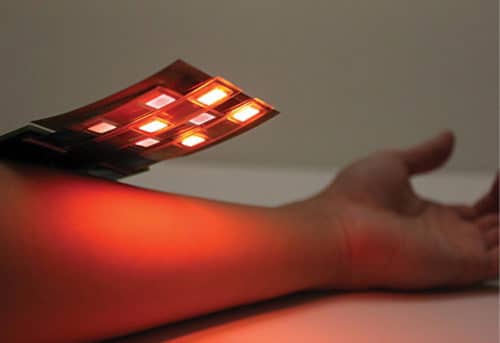LEDs have proven their versatility in the healthcare sector. Coloured light, for example, has a calming effect on patients, as dynamically changing the light provides the human organism with activating impetus.
LEDs were once almost exclusively used as status indicators on circuit boards or control panels. Today, these can be seen almost everywhere. Small size, low current and low energy consumption of LEDs have led to uses including large-area LED displays for stadium displays and small, thin, lightweight uses such as status indicators and glow lights. It would not be an exaggeration to say that LEDs have already transformed the luminance industry outlook towards everyday lighting devices as well as vehicle lights.
Going beyond the lighting applications of LEDs, their utility has been gaining ground in the health sector, too. This article highlights in brief the developments of LED-based technologies in terms of medical applications.

Medical applications
Some applications of LEDs in the medical field are discussed here.
Surgical lighting
In comparison to traditional surgical lighting systems using halogen or gas-discharge bulbs, present medical facilities are taking advantage of the inherent characteristics of high-performance LEDs, including superior lighting, longer lives and reduced power consumption. LED-based surgical lights have already become the technology of choice for overhead illumination in operating rooms (ORs) of many hospitals and dental operatories.
High-performance LEDs are putting surgical lighting and light-applied medical treatments on the cutting edge with high luminous outputs and energy-efficient designs. It is due to these reasons that LED surgical lights produce a high intensity white light with high colour temperature for optimum visibility and illumination, which reduce eye strain and mental fatigue of the surgical staff, thus promoting high concentration and energy levels through the duration of medical procedures.
Advanced LED surgical lighting systems typically make use of modular panel designs with each panel equipped with arrays of high-powered LEDs to provide a superior uniform light. These systems use innovative colour-control technology that helps adjust the colour temperature of the output light while maintaining high colour rendering. This allows optimum surface contrast and enhanced tissue differentiation at the surgical site.
Units are thin and lightweight so they can be attached to mobile stands or maneuverable boom arms mounted on a wall or ceiling for easy positioning. Moreover, fixtures can incorporate panels of different sizes and quantities to control light output and coverage area.
Another advantage of LED surgical lights is that, unlike conventional lighting devices these do not radiate heat on the surgical area, which imparts an extra measure of comfort to the surgical staff and reduces air-cooling requirements of the area, thus creating extra energy savings.
Further, low emissions of IR and UV radiations from LEDs also make these lights safe for highly-controlled medical environments as these do not interfere with sensitive chemical compounds, diagnostic sensors or specialised treatments. In situations where more localised light is required at the surgical site, LED-based surgical headlights can be used. Such lights use a single high-output LED with high colour temperature to create a powerful beam of white light with a tight lighting field.
Such lights can also be directed to specific areas to compensate for any shadows in the operational area, thus providing more visibility at depth. Super-localised lighting inside the wound area and inside the body are primarily achieved through endoscopic devices that use a flexible or rigid fibre-optic system to transmit light to the inserted tip for internal illumination.
LED endoscopic lighting
Advanced solid-state (that is, LED) endoscopic lighting integrates LED modules on the head of devices in place of fibre optics. High-powered white LEDs are being used as the source of light for these devices because of their high luminous output, dynamic control and superior energy efficiency compared to traditional light sources. This puts LED sources of light directly at the point of illumination to ensure optimum light quality and emission.
For improved illumination, integrated designs and attachable LED lighting systems are being applied to such medical instrumentation as examination probes, tissue retractors and surgical forceps. One recent innovation in this direction is the development of a stretchable sheet of tiny micro-LED arrays measuring 100µm connected across an interlaced circuit mesh, transferred to a flexible polymer sheet and encapsulated in transparent rubber. The sheet is biocompatible and can be attached to a number of surfaces and materials. Flexible micro-LED arrays could lead to wearable light sources and high-tech surgical gloves.
Treatment with light
In the medical field, phototherapy provides controlled exposure to light using lights of particular wavelengths (specific colour ranges) based on light intensity and duration of exposure to treat a variety of medical conditions and sleep disorders to promote general health and well-being. LEDs are also affected by the applied wavelength’s ability to penetrate the skin in non-vision-related treatments. In fact, LEDs are becoming the primary light source for such applications because of their characteristics like high luminous output, energy efficiency and durability.

Arrays of high-powered LEDs or multi-chip modules can be easily integrated into a variety of treatment devices that are used to provide intense uniform light fields with controlled intensity. LED-assisted treatment devices can be portable, handheld applicators that provide a spot beam for small treatment areas, medium-sized lighting panels for partial body coverage or large-scale systems containing thousands of LEDs that can be used for complete body immersion. Such light arrays can also be populated with multi-coloured LEDs, which allow a single device to use a specific wavelength for a desired treatment.
- Red-coloured light having the deepest tissue penetration in the visible light range can stimulate natural biological processes that promote healing of damaged and weakened cells.
- Blue-light phototherapy is used to treat neonatal jaundice in newborns.
- Disorders involving disturbance of the sleep cycle (circadian rhythms) are a common experience for late-shift workers, jet-lagged travellers and those living in colder northern climates suffering from seasonal associative disorders. Moreover, lethargic symptoms of such people can be treated by timed/controlled exposure through the retina of the eye to bright white light at specific time periods. The light triggers a biochemical reaction in the brain, inhibiting the production of melatonin, which determines the sleep cycle.
- High-powered white LED arrays, which emit up to 10,000 lux, are being used to simulate the full spectrum brilliance of daylight sun.
Photodynamic therapy
Photodynamic therapy uses LED light to activate photo-sensitive drugs to treat such skin conditions as severe acne and cancerous skin lesions. The basic treatment consists of applying the dormant drug to the affected area of the skin and then exposing it to a specific wavelength of light, which causes the drug to undergo a chemical reaction and treat the targeted tissue.
Light sources typically consist of arrays of high-output LEDs, which can be used in small lighting instruments for spot treatment or moderate-sized lighting panels for larger treatment areas. LEDs are ideal for photodynamic therapy applications because of their ability to emit a consistent, uniform band of narrow wavelength to which applied drugs are closely matched.
Future LED medical applications for healthcare enhancement
By combining LED technology and medical research, several integrations have already been revealed, while others are under progress, showing the potential of the technology in healthcare applications and their development. LED applications create possibilities for future medical improvements. Some of these are discussed next.
Elastic micro-LED skin sensor system
A new ultra-thin, elastic micro-LED display that fits snugly on the skin has been developed by researchers. The integrated biomedical sensor system, named skin electronics, combines a flexible, deformable display with a lightweight sensor composed of a breathable nano-mesh electrode and wireless communication module. Flexible skin electronics can measure medical data via the sensor and display information on the screen while transmitting it to the cloud and/or other memory devices.
The system was developed with the purpose to enhance information accessibility for the elderly or the infirm, who have difficulty operating and obtaining data from existing devices and interfaces.
Micro-LED wearable device to stimulate hair growth
With the development of vertical micro-LEDs, researchers have revealed a new application for re-growing hair for mice. They have developed a wearable photo-stimulator using a flexible array comprising 900 red vertical micro-LEDs. To test the device, they shaved the heads of mice. After twenty days, the mice who received stimulation from the micro-LED device showed longer hair in a wider area in comparison with those with other treatment.
In terms of its (treatment) advantages, the device used about thousand times less power per unit area as compared to a conventional phototherapeutic laser, without generating heat enough to cause thermal damage to skin.
Smart contact lenses for glucose monitoring and other applications
A Korean research team at Ulsan National Institute of Science and Technology (UNIST) has released smart contact lenses integrated with glucose sensors, wireless power transfer circuits and LEDs. The device can monitor glucose levels in tears and provide instant sensing results via the embedded LED display.
In addition, imec has presented its development of LED-light-integrated contact lenses in collaboration with Ghent University and SEED, a contact lens producer. The device has been designed to integrate transducers into lenses for diagnosing and treating ocular diseases. Scientists also suggested that the lenses could provide a wide range of such applications as drug-delivery for eye treatments.

Implantable LED device for curing cancer
LEDs could also be used to heal cancer, according to researchers from Waseda University. The Japanese research team has developed an implantable device consisting of LED chips and bio-adhesive nano-sheet, which has successfully shrunk the tumours in mice through photodynamic therapy.
The application can be attached onto the inner surface of animal tissue where it releases low-intensity irradiation to treat targeted lesions with metronomic photodynamic therapy (mPDT)—a treatment that uses special drugs and particular lights to kill cancer cells with low dose in the long term. By directly attaching the device with mPDT on the target tumor, it reduces the threat to healthy areas.
Flexible OLED sensor to monitor blood-oxygen
A flexible OLED sensor has been developed for detecting blood-oxygen levels of skin, tissue and other organs. The OLED sensor has been assembled from a printed sheet of organic photo detectors on the top and organic red and IR LEDs on the bottom. With organic electronics printed on bendable plastic that moulds to the contours of the body, the sensor can detect blood-oxygen levels at nine points in a grid and can be placed anywhere on the skin. Through tracking blood-oxygen levels on a larger area, the OLED sensor can monitor healing wounds. Such disorders as diabetes and respiration diseases could also benefit from the application.

IR pain treatment
A company in the US has received clearance to market its LED-based IR therapy device developed for temporary relief/reduction of minor pain or discomfort associated with muscles including neck and back pain caused by muscle tension, joints, arthritis, sprains and strains. The device makes use of low-intensity IR light from an LED source to stimulate natural biological processes in the area where light is applied. Referred to as photo-bio-modulation or photo-bio-stimulation, the process promotes the body’s own natural healing and tissue immune responses.
To conclude, LEDs have already proven their versatility in the healthcare sector. Coloured light, for example, has a calming effect on patients, as dynamically changing the light provides the human organism with activating impetus. This is why hospitals and medical practices are increasingly making use of powerful LEDs for diagnostic and therapeutic purposes.
Dr S.S. Verma is professor at Department of Physics, Sant Longowal Institute of Engineering and Technology, Sangrur, Punjab






